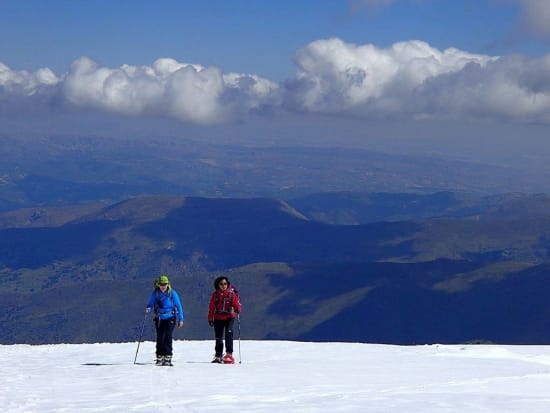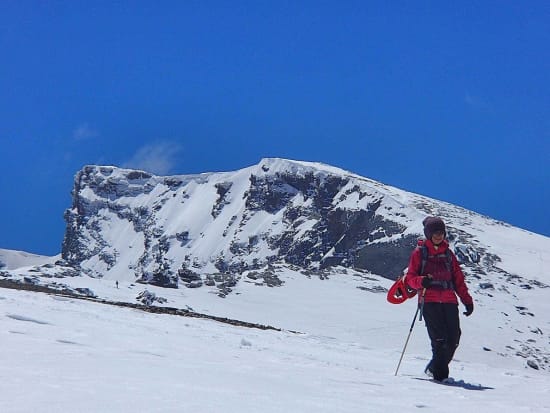Sports professionals have long used the Sierra Nevada in Spain for altitude training. However it is also used by trekkers and mountaineers training for high mountain challenges such as Kilimanjaro, Mont Blanc or Aconcagua.
As there are some 27 points above the magical 3000m level there is plenty of opportunity to gain acclimatisation in preparation for your trip. Indeed at 3482m, Mulhacén is the highest point in mainland Spain. The second highest, Veleta is 3394m. Accessibility is also very easy either from the ski centre to the north west near Granada or from Capileira in the Alpujarras to the south of the range.
What is High Altitude?
Altitude starts to have an effect around 1500-2000m. The body starts to behave slightly differently as it tries to make up for the change in oxygen levels. Go up too fast above 2500m and altitude illnesses are common. If you go slowly you should stay healthy.
High Altitude Problems in the Sierra Nevada

Training at altitude
We have, in reality, had very few instances where AMS has resulted in having to bring a client down to a lower level. When that has been the case, the client has recovered immediately on getting to lower ground and has had no further problems.
These mountains have much high ground over 3000m, but provided that the advice above is followed, ie go slow, then the altitude effects are lessened considerably. On countless occasions we have parked the car at 2500m (having driven up in 1hr from 650m!) and someone has gone off too quick. It is very tempting! Our mountain guides take it very easy, a snails pace, especially for the first 30 minutes after leaving the car. We find that in that time our body adjusts better and we can then continue a little more rapidly. However, we live and train here in these mountains. Clients coming straight in from sea level will find it harder.
The suggestion for clients therefore is to follow behind your guides. Forget records and competitive instincts. Go their pace. They know the speed at which you should be going. They have the experience.
An Example

Ann with Veleta 3394 behind
Ann came to visit us last week. She specifically wanted to learn how to walk at altitude and to recognise the symptoms associated with altitude. She is training for a charity challenge ascending Kilimanjaro.
Day 1 - unfortunately a poor day in the mountains, but we started at 1700m and ascended in thick mist to 2500m. Ann learnt how to walk slow. Not as easy as it might seem, especially for fit people. We taught her the "alpine rest stop" (a method of taking a rest at each step), and how to measure her own body's reaction to altitude. Nearing the high point she felt a little light headed so we plunged down snow slopes in the mist to lower ground.
Day 2 - A beautiful day with the snow clad Sierras looking fantastic. Starting at 2250m we ascended to the 2900m level. Learning how to cope with faster, more competitive people is also a skill to be learnt and coped with. The body acclimatizes far better taking 5 hours to go from A to B rather than taking 2 hours and then sat around for 3! Slow and steady means fewer stops, and better walking rhythm.
Day 3 - Ascending the northern slopes of Veleta (3394m) in deep snows and under clear blue skies. Snowshoes were necessary. Above 2900m the effects of the altitude were felt. It is also essential to understand the importance of keeping hydrated. Altitude sucks the moisture from your body. Ann didn't drink enough, despite being reminded constantly. Despite feeling a little lightheaded she nevertheless had a great day.
Ann returned to Scotland understanding much more about the complexities of altitude and the way to cope with them. We wish her luck on Kilimanjaro.
Further Reading
Altitude Related Problems in Spain's Sierra Nevada
Extracts here are taken from the handbook "TRAVEL AT HIGH ALTITUDE" published free by MEDEX. This handbook is highly recommended reading for anybody going above 2500 metres. Copies of the handbook can be downloaded free of charge at www.medex.org.uk.
